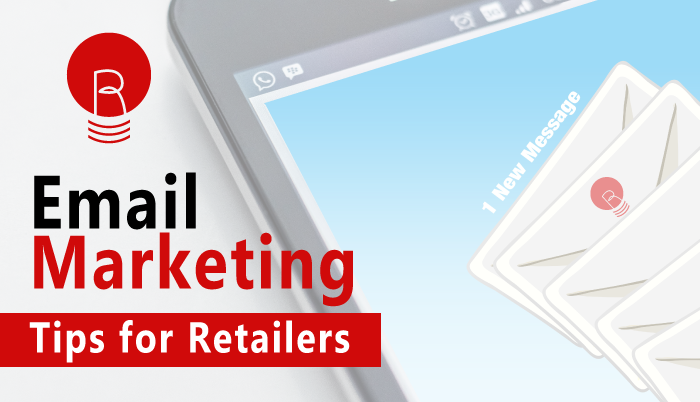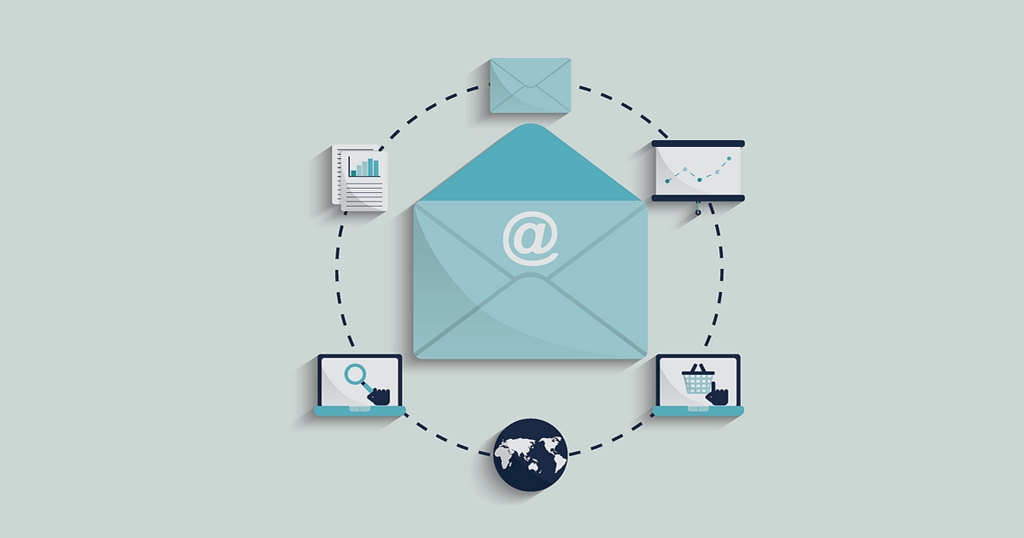
by Don Pingaro | Nov 3, 2017 | Commerce Strategy
At Redstage, we try to keep our content fresh, informative, and interesting for our readers. Whether it’s marketing psychology or the latest eCommerce growth hacks, our aim is to supply you with a constant stream of useful, actionable, and entertaining material. Thanks for tuning in! We hope we’ve helped you on your own quests in the industry. Here are the top 5 most read eCommerce articles from Redstage Worldwide:
#1. Online Buying Behavior: The Difference Between Men & Women

Are Men and Women equals when it comes to shopping? The answer, unsurprisingly, is – definitely not. While much has changed in recent years, there are still some behavioral aspects that set these two genders apart. What this article is primarily tackles though is the difference between online buying behavior between men and women. (read more)
#2. Selling & Upselling with Psychology & Human Behavior

This article was written by Anthony Latona, Redstage Worldwide’s Chief Marketing Officer & Controller. He writes, “Ted.com is one of my favorite websites ever. The entire site is filled with some of the most interesting, captivating, thought provoking and mind blowing presentations from the world’s top geniuses and experts. I highly recommend clicking around Ted.com and learning something… I recently watched this particular video called, “Are we in control of our own Decisions?” by Dan Ariely. Dan Ariely is a behavioral economist and wrote the book “Predictably Irrational” (Official Site). His TED Talk is brilliant and has a few ideas that we can use in our online marketing and on our eCommerce websites… Here’s what I found out…” (read more)
#3. How All B2C Companies Should Be Marketing By 2020

According to Adam Morris, CEO of Redstage, “The most profitable companies in 2020 will be those which seamlessly integrate content, product development and lifestyle marketing into the customer journey — and benefit from the data.” As an IoT enthusiast (already automating his household with Google Home), Morris believes “top brands will meet customer needs almost instantly, anywhere, and make customers view brand interactions as a constant benefit to their lifestyle.” In this world… (read more)
#4. The Incredible benefits of Magento 2

Magento just took everything to a whole new level with Magento 2.0. Magento 2 offers a superior feature set compared to nearly any other eCommerce platforms but you may ask yourself… What are the real benefits of Magento 2? Originally, we thought that Magento 2 would simply be a major upgrade from Magento 1, but it’s actually much, much more than that… (read more)
#5. Top 5 eCommerce Challenges Stores Will Face This Holiday Season & How To Address Them

With the holiday season underway, it’s no wonder this one made the list. From stock control to shipping to shopping experiences, here are the top 5 pain-points stores will face this holiday, and our guide to managing these risks. (read more)

by Don Pingaro | Oct 10, 2017 | UX/UI Design

Costly Web Design Mistakes
Every year, companies hire the wrong web developer. Maybe it’s a budget issue, an error in judgement, or simply a friend who offered “expertise” that doesn’t actually have any. Regardless of cause, here are 5 costly web design mistakes that plagued eCommerce sites in 2017 (and how to fix them!):
5. Supercharge Your Cart
Customers expect the cart to be located in the top right corner. We know this. Still, many sites stray from the convention, or even make the cart more difficult to find than it should be. Cart location is especially important in preventing cart-abandonment, as someone might leave the site with items in their cart… when they return, you want to make it as easy as possible for them to find the cart again and continue to checkout.
Studies show that changing the word or icon from “bag” to “cart” and/or adding the word “checkout” can increase conversions significantly (Sources: UXmovement, Conversionfanatics). Last point on this note, consider adding a “checkout” link that only appears next to the cart once items are placed inside. A little encouragement goes a long way.

4. Feature Products Above The Fold
Many home pages leave a lot to be desired. Think of the laziest shopper in the world. For them, and even seasoned shoppers, scrolling is the enemy. For this reason, it’s important to feature your “New Products,” “Best Sellers,” or “Our Picks” section front and center of your homepage. This immediately draws interest from users, especially in retail when everyone’s searching for the hottest new trend. If you choose to feature a carousel of images, you’d do well to triple-check that it’s easily navigable, or risk losing customer attention. Limit the number of banners on your carousel to between 3 and 5, and make sure they all contain a clear call to action and/or deal. This is the most valuable real estate on your site. Use it wisely.
3. Rethink Your Links
All links across your site should underline when hovered over. Roughly 8% of men are colorblind, so a hover color alone might not do it. Remember to keep your link format consistent, and keep links evenly spaced from one another. If you different pages share the same link, ensure that you choose one standard location for the link so the customers know where to find it and don’t go searching. If someone has to ask “where is it?” you’re already losing customers.

2. Optimize Your Checkout Gateway
Another common mistake (or rather, a common set of mistakes) happens at checkout. There’s 7 things every site should have at checkout: A way to remove an item from the cart, a “continue shopping” button, total cost, a coupon code entry box, and shipping times (with options and other info if available). The sixth and possibly most important thing to have here are trustmarks. Is the site SSL secured? Is it accredited by the BBB? Are there credit card logos to show which types are protected / can be used? Are you an authorized/ accredited distributor of whatever you’re selling? These can be major selling points to the right customer, and frankly, if the site isn’t at least SSL secure, this author and 85% of consumers won’t buy anything. Trustmarks should also be clickable, linking to another page of your site or opening a new window to more info on the credibility of the security provider. The seventh part of any good checkout is of course…
1. Recommend Additional Products
Displaying “Related Products” or “Customers Who Bought These Items Also Bought” functionality that lists additional items your customers might want to add to their cart can be a very profitable move (RE: The Psychology of Upselling). You can accomplish this with several platforms like Nosto + Magento, but regardless, it’ll definitely give you a sales boost. These are just a few of our everyday encounters at Redstage. If you have questions about any additional web design mistakes, feel free to ask in the comments. If you want the expert devs at Redstage to give your site a conversion audit, click here!
Good luck! And may the odds be forever in your favor.

by Don Pingaro | Oct 4, 2017 | Commerce Strategy, UX/UI Design
Did You See It Coming?

Earlier this month, IKEA emerged as the sleeper champ of retail’s augmented reality arms race. On the AI front, companies like Emarsys and Edgecase released eCommerce products that use advanced machine learning techniques to automate time-consuming data analysis and predictive forecasting strategies for retailers. With such tools available to manage mass audiences and their data, this is an opportunity for tech-minded shops to get a leg up on the competition. As a result, we can expect to see some large retailers (those who fail to adapt) fall behind in a relatively short amount of time. Survivors of this retail purge will make themselves known in the next year or two as these technologies become cornerstones of eCommerce. Here are some big changes to expect in the new paradigm of online shopping that everyone will be adding to next year’s budget.
“The IKEA Effect”
 Diving into Apple’s ARkit early-on, the home furniture & appliance giant successfully launched an AR app that lets users view how IKEA’s furniture will look in their home by selecting products from an online store. Released with iOS11, the brand was primed for a massive market reaction. Sure, the items still have some issues (they don’t adapt to lighting too well and their textures aren’t quite realistic), but as the first retail brand to jump into AR, the starting gun has been fired, and many companies are racing to capture value through this technology. Redstage CEO Adam Morris sees huge potential for AR in eCommerce, stating, “There’s certain industries that I see really benefiting from AR, especially companies where seeing the item in-person plays a huge factor. I believe jewelry sales could be completely revolutionized with AR, and then on to home goods like furniture.” However, Morris notes that the eCommerce industry typically lags a few years behind the latest tech trends, relying on major user adoption for companies to jump on the bandwagon. “For instance,” he recalls, “we talked about ‘mobile-first’ for years, well before companies would begin implementing it. Most didn’t pull the trigger until they had no choice — when mobile users made up more than thirty percent of their user base. It’s easy to argue that the industry is still doing a horrible job at mobile commerce, even now with roughly two-billion online shoppers using mobile.” Perhaps the companies that have been slow to catch up with mobile will double-down on AR, or risk giving up their market share to the brands that do. So what happens when health and beauty retailers jump onto this train? If Snapchat can already morph your face and add eye-shadow, will brands like Ulta Beauty and Maybelline step up to the challenge? How will consumers react to no-longer trying on makeup in-store, or to saving bundles of cash testing it through your app? Years down the line, this may even change the supply chain, because stores can test products without actually making them, without buying in bulk, and never worry about hemorrhaging money selling-off failed product. Will proactive make an AR filter to show what you’d look like without acne? Will Schick and Gillette face-off for a chance to show you how to carve up that beard? Furthermore, what will become of Snapchat, now that the company announced it will let brands create their own AR features? The possibilities are endless, and the brands that don’t engage AR or continue to view it as a passing trend will feel it in their bottom lines sooner or later. Watch: Snapchat’s Latest AR Project Puts Artwork All Over US Cities
Diving into Apple’s ARkit early-on, the home furniture & appliance giant successfully launched an AR app that lets users view how IKEA’s furniture will look in their home by selecting products from an online store. Released with iOS11, the brand was primed for a massive market reaction. Sure, the items still have some issues (they don’t adapt to lighting too well and their textures aren’t quite realistic), but as the first retail brand to jump into AR, the starting gun has been fired, and many companies are racing to capture value through this technology. Redstage CEO Adam Morris sees huge potential for AR in eCommerce, stating, “There’s certain industries that I see really benefiting from AR, especially companies where seeing the item in-person plays a huge factor. I believe jewelry sales could be completely revolutionized with AR, and then on to home goods like furniture.” However, Morris notes that the eCommerce industry typically lags a few years behind the latest tech trends, relying on major user adoption for companies to jump on the bandwagon. “For instance,” he recalls, “we talked about ‘mobile-first’ for years, well before companies would begin implementing it. Most didn’t pull the trigger until they had no choice — when mobile users made up more than thirty percent of their user base. It’s easy to argue that the industry is still doing a horrible job at mobile commerce, even now with roughly two-billion online shoppers using mobile.” Perhaps the companies that have been slow to catch up with mobile will double-down on AR, or risk giving up their market share to the brands that do. So what happens when health and beauty retailers jump onto this train? If Snapchat can already morph your face and add eye-shadow, will brands like Ulta Beauty and Maybelline step up to the challenge? How will consumers react to no-longer trying on makeup in-store, or to saving bundles of cash testing it through your app? Years down the line, this may even change the supply chain, because stores can test products without actually making them, without buying in bulk, and never worry about hemorrhaging money selling-off failed product. Will proactive make an AR filter to show what you’d look like without acne? Will Schick and Gillette face-off for a chance to show you how to carve up that beard? Furthermore, what will become of Snapchat, now that the company announced it will let brands create their own AR features? The possibilities are endless, and the brands that don’t engage AR or continue to view it as a passing trend will feel it in their bottom lines sooner or later. Watch: Snapchat’s Latest AR Project Puts Artwork All Over US Cities
The Fully Automatic Customer Journey
 Emarsys’ eCommerce platform is taking the world by storm. Using artificial intelligence to automate various customer retention and acquisition strategies, the AI uses machine learning to quickly create the perfect online shopping experience for each customer. Designed by Forrester, the system quickly crunches oceans of data about site visitors to cater to their needs and desires. After uploading two years of historical user data, eCommerce companies can maximize ROI on existing users. For new users, the Emarsys AI takes an average of 8 weeks to optimize the customer journey and activate recurring campaigns to keep engagement high. While there are many AI competitors out there, Emarsys boasts a robust, user-friendly platform that creates a truly personal experience for each shopper. As Morris describes it, “AI is becoming essential to work personalization into eCommerce, and machine learning systems offer huge advantages over rule-based systems. Marketers do not need to spend nearly as much time tweaking and administering a rule-based system when the AI is optimizing it automatically.” He adds, “We had a customer that doubled their newsletter list from 50k subscribers to 100k. However, since they did not employ any personalization strategies for what products were beingpresented, they only received a 15% increase in revenue from that channel.” As eCommerce threatens to surpass in-store sales (Business of Fashion) personalization of branded messages is critical. What are you doing to cater to each customer?
Emarsys’ eCommerce platform is taking the world by storm. Using artificial intelligence to automate various customer retention and acquisition strategies, the AI uses machine learning to quickly create the perfect online shopping experience for each customer. Designed by Forrester, the system quickly crunches oceans of data about site visitors to cater to their needs and desires. After uploading two years of historical user data, eCommerce companies can maximize ROI on existing users. For new users, the Emarsys AI takes an average of 8 weeks to optimize the customer journey and activate recurring campaigns to keep engagement high. While there are many AI competitors out there, Emarsys boasts a robust, user-friendly platform that creates a truly personal experience for each shopper. As Morris describes it, “AI is becoming essential to work personalization into eCommerce, and machine learning systems offer huge advantages over rule-based systems. Marketers do not need to spend nearly as much time tweaking and administering a rule-based system when the AI is optimizing it automatically.” He adds, “We had a customer that doubled their newsletter list from 50k subscribers to 100k. However, since they did not employ any personalization strategies for what products were beingpresented, they only received a 15% increase in revenue from that channel.” As eCommerce threatens to surpass in-store sales (Business of Fashion) personalization of branded messages is critical. What are you doing to cater to each customer?
Fringe Shoppers Beware
We all do it. We’ll aimlessly surf Amazon or another online retailer looking for something cool to buy, even when we don’t know exactly what we want. Edgecase, the company formerly known as Compare Metrics recently released a new product that helps convert shoppers who have a vague idea or even no idea of what they want. In a time where eCommerce and marketing penetrate the lives of every consumer, tools like Edgecase that help convert the shopping addicted masses are becoming hugely important. When integrated with an online store, the software makes selections for users based on what they’re thinking of (i.e. a blue dress in a certain size) rather than a specific brand. Users can also receive lists of recommended items when shopping for a specific event like a wedding or graduation. As we enter that special time of year, consider how a system built to convert fringe shoppers can have massive impact.
Final Thoughts
As the holiday season looms, companies taking advantage of AR and AI pose the biggest threat to your bottom line. As the eCommerce arms race ramps up, winners and losers will be defined by how they spend their 2018 budget. Make sure you’re planning to implement these tactics by next year’s holiday rush, or risk being left out in the cold.
Further Reading
+ Here’s five other ARkit projects that released with iOS11. + View Redtage’s outlook on the future of marketing & customer experiences. + Ten companies using machine learning in cool ways.

by Don Pingaro | Sep 25, 2017 | Commerce Strategy, UX/UI Design
A Connected Vision
Imagine the year is 2020… You awake in your home of the future. The light buzz from your smartwatch pleasantly rouses you from your slumber. You hear the steadily crescendoing notes of your favorite song play through wireless Bluetooth speakers. Morning sun filters into the room as the smartglass on your windows transitions from opaque to clear. As you step out of bed you notice your connected shower is already running, set to the perfect temperature. Meanwhile, your Wi-Fi-enabled coffee machine prepares to brew just in time for your arrival in the kitchen. This is the automated dream of the Internet of Things, and believe it or not, these patterns emulate how B2C companies should be marketing by 2020.
According to Adam Morris, CEO of Redstage, “The most profitable companies in 2020 will be those which seamlessly integrate content, product development and lifestyle marketing into the customer journey — and benefit from the data.” As an IoT enthusiast (already automating his household with Google Home), Morris believes “top brands will meet customer needs almost instantly, anywhere, and make customers view brand interactions as a constant benefit to their lifestyle.” In this world, your coffee would never be too hot, and your shower, never too cold. It combines elements of growth hacking strategies from the world’s most successful marketers to the best “freemium” channel managers. However, there’s one bump in the road to this bright, utopian brand vision… B2C companies are still playing catch-up with today’s technology.

Thinking Ahead: Winners & Losers
As Forbes reported in 2015, “only 10% of companies are using marketing automation.” However, in 2016 marketing automation exploded, rising to 49% of B2C companies on average. Still, we’re not seeing the utopian lifestyle we were promised. Why? Blame the learning curve. Because marketers are
still getting used to the software, the investment has not yet matched the results for many. While millennial companies are diving right in, established giants are taking time because this software is changing centuries-old business models, and mass firings of outmoded workers don’t resound well in the minds of shareholders… At least for now… Regardless, young or old, many companies are still not using automation to its full potential.
As a marketing professional, I recommend taking a look at this list here. These marketing platforms have near-endless integrations with programs most companies already use, and that’s the point: Automate and optimize your existing operations, then innovate, restructure and repeat. One notable member of this list, Magento, contains such immense customization capabilities for B2C and B2B marketers that there are now numerous sites solely dedicated to downloadable integrations for the software.

Preparing for 2020
Companies like Redstage, Zapier, IFTTT (If-This-Than-That) and even freelance developers constantly build new programs and apps to simplify massive processes for businesses. So if you know your company isn’t ready for the next wave, what’s your excuse? It’s time to hop on the innovation train or risk falling behind when 2020 Marketing comes around. And just in case you’re the one writing the budget proposal, start with the bottom line. As CMO.com reports, “77% of CMOs at top-performing companies indicate their most compelling reason for implementing marketing automation is to grow revenue.” The recipe works. What’s your excuse?
If you liked this article, check out our latest posts:
+ AR & AI: The eCommerce Arms Race
+ How to Create Viral Marketing for eCommerce
+ Email Marketing Tips for Retailers

by Don Pingaro | Sep 22, 2017 | Commerce Strategy, System Integrations

Email Is King.
When it comes to eCommerce, email is the most vital and potentially profitable channel in your marketing arsenal. According to the Direct Marketing Association, “Segmented and targeted emails generate 58% of all revenue”. That number alone should get your blood pumping, but if your email campaign ROI is lacking, it’s time for some big changes.
1. Use Clear CTAs.
The subject line and opening text are the first part of the email anyone interacts with. The shorter the subject line, the more space the first bit of text in your email will occupy in their inbox (So make sure your opening line isn’t the default “Can’t Read This? View in browser” text… Use this real estate for something more valuable). This is your elevator pitch in ~72 characters. MAKE. IT. COUNT. Be sure to use a subject line that is catchy and engaging. Most customers won’t bother to open an email if the subject fails to pique their interest or at least stand out from the multitude of other marketing emails they receive.
Intend to resonate with the specific demographic you’re targeting, and avoid generic sales words. If it sounds too sales-y, you’re damned to the spam box. Too specific, i.e. “Hi John I saw you looked at our page…” and you’re creepy. Seek balance, and don’t be afraid to A/B test. Your subject line should always inspire someone to click, so aim for powerful call-to-action words like “Jumpstart,” “Command,” and “Unleash” (if applicable).
2. Segment Your Customers.
As I mentioned above, subject lines should be specific to the intended target. This could be 1 person or several thousand, as long as you can get a little specific and make your target feel like the email was tailor-made for them. No customer is created equal, but if your customer analytics are up-to-snuff, you should be using that data to segment your audience by demographic location, gender, age, product category, or at least their general interest area. Amazon isn’t sending emails to middle-aged men about hair dryers. Neither should you.

3. Make Yourself Known.
Your email sender ID can make or break your response rate. Use a welcoming, approachable email ID to send out emails to customers. If there’s a photo section, choose a happy-faced employee’s headshot rather than a cold-faced logo. It’s simply more personal. Lastly, and this should go without saying, you’ll get more feedback from customers if you use and email they can reply to… Instead of using an email such as noreply@google.com or from info@mycompany.com, use a person’s name. Humans enjoy talking to humans. Be human.
4. Personalize the email.
Personalize the email by using the customer’s name. This makes the customer feel valued and inherently makes the connection more personal. You can use *first_name* tags in the body of the email, as well as the subject line (with some email clients).
5. Content Is Everything!
Don’t underscore the importance of style when writing your customers or clients. All images and written content should be of the highest quality (especially because misspellings are usually seen as spam indicators). Less is more: To grab the attention of recipients, keep your copy simple and to-the-point.
Avoid ALL CAPS at ALL COSTS. Refrain from overuse of exclamation marks, images and gifs. Many studies have shown that more images lead to lower response rates. Not only are multiple images too heavy on the eyes of your customers, but your email could fall victim to loading time or formatting issues. These are common on certain devices, which can severely distort your message. If you’re showing off a product or something else that’s photo-heavy, put a “learn more” button that links to a page on your website for external content. It’s easier on them, prevents distortion of message, and if you’re tracking clicks, this can help qualify interested leads. It’s a win-win. Most importantly, the content of your email should be something your customers look forward to, so offer something valuable instead of asking them for something (if you can avoid it).
“Of the 100+ eCommerce companies that I’ve worked with over the past few years, the most successful are those that take the extra time to formulate and execute well-thought out e-mail marketing campaigns. Your e-mails are being seen by all of your clients and prospective clients; optimizing these touchpoints will help you increase sales while strengthening your brand.”
-Dave Gardner, Senior Account Executive & Team Lead at Redstage

One Final Note
According to the Direct Marketing Association, only a mere 7% of SMBs use emails as a branding tool. In fact, most Magento users aren’t customizing their transactional emails at all. Luckily, Redstage is launching a new product, offering unlimited customization of Magento Transactional Emails. Our team will work with you to create stunning email templates tailored for your specific needs. You’re already sending at least 4 emails to every new customer – let’s optimize every one of them to enhance your customer experience. Learn More >




















Recent Comments